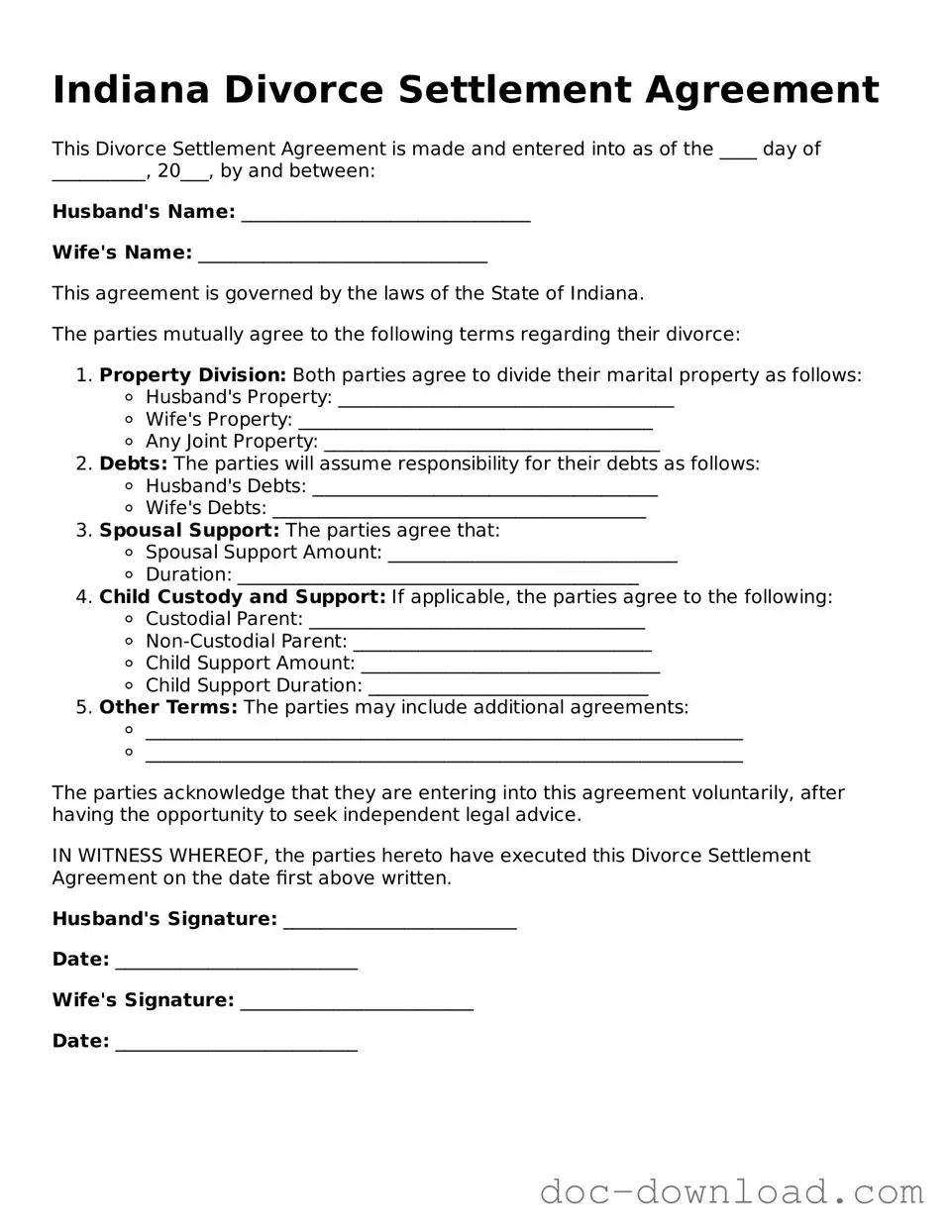The Indiana Divorce Settlement Agreement form shares similarities with the Marital Settlement Agreement. Both documents serve to outline the terms of a divorce, detailing how assets, debts, and responsibilities will be divided between the parties. Just as the Indiana form specifies the arrangements for child custody and support, the Marital Settlement Agreement also includes provisions for these critical aspects, ensuring that both parties have a clear understanding of their obligations moving forward.
The California LLC 1 form is an essential document for anyone looking to establish a Limited Liability Company in California. This form serves as the Articles of Organization, outlining the necessary steps for the formation of an LLC. Completing and filing the form accurately is crucial for a successful setup, and further information can be found at https://californiapdffoms.com/.
Another document that parallels the Indiana Divorce Settlement Agreement is the Separation Agreement. This document is often used by couples who wish to live apart but are not yet ready to file for divorce. Like the Divorce Settlement Agreement, it addresses the division of property, financial support, and child custody arrangements. The key difference lies in the fact that a Separation Agreement may lead to a divorce later, while the Indiana form is finalized once the divorce is granted.
The Child Support Agreement is also comparable, as it focuses specifically on the financial responsibilities parents have toward their children following a divorce. While the Indiana Divorce Settlement Agreement encompasses various aspects of the divorce, including child support, the Child Support Agreement hones in on the monetary obligations, ensuring that the children's needs are prioritized and that both parents are clear on their contributions.
Additionally, the Parenting Plan bears similarities to the Indiana Divorce Settlement Agreement, particularly in how it addresses child custody and visitation. A Parenting Plan outlines the day-to-day responsibilities of each parent, including schedules and decision-making authority. While the Divorce Settlement Agreement may include a brief overview of parenting arrangements, the Parenting Plan provides a more detailed and structured approach to co-parenting after the divorce.
The Property Settlement Agreement is another document that aligns closely with the Indiana Divorce Settlement Agreement. This agreement focuses solely on the division of marital property and debts. Both documents aim to ensure a fair distribution of assets and liabilities, but the Property Settlement Agreement may be used in situations where the couple is not seeking a divorce immediately, allowing them to resolve financial matters independently.
Lastly, the Affidavit of Financial Disclosure is similar in that it is often required in divorce proceedings. This document provides a comprehensive overview of each party's financial situation, including income, expenses, assets, and debts. While the Indiana Divorce Settlement Agreement uses this information to negotiate terms, the Affidavit serves as a transparent disclosure of financial circumstances, ensuring that both parties are fully informed during the settlement process.
